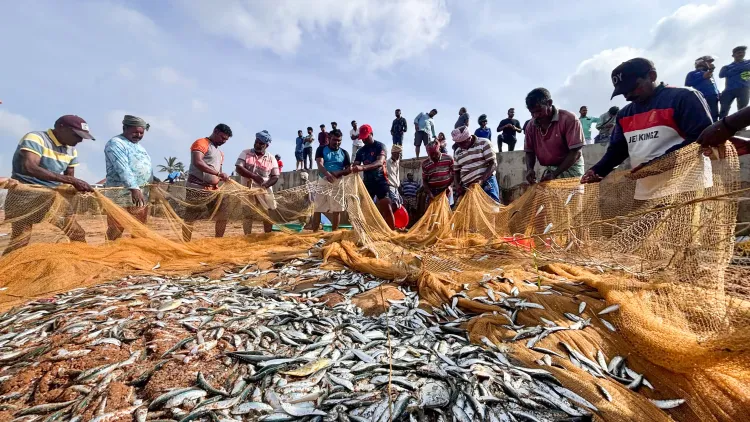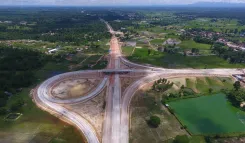Is India the World’s Second-Largest Fish Producer?

Synopsis
Key Takeaways
- India is the second-largest fish producer globally.
- Contributions to global fish output stand at 8 percent.
- The government's investments have reached Rs 38,572 crore.
- Annual growth rate of fish production is 8.74 percent.
- Seafood exports have increased to Rs 60,524 crore.
New Delhi, Oct 4 (NationPress) India stands as the world’s second-largest producer of fish, accounting for 8 percent of the global fish output. Moreover, the nation holds the second position in aquaculture production worldwide, as reported by the government on Saturday.
Since implementing targeted measures in 2015, the government has sanctioned or announced a total of Rs 38,572 crore in investments across diverse schemes.
As a result, overall fish production has surged to 195 lakh tonnes, with the sector witnessing an impressive annual growth rate of 8.74 percent.
In terms of seafood exports, these have climbed to Rs 60,524 crore in the fiscal year 2023-24. With the establishment of 34 fisheries production and processing clusters nationwide, the Department is actively promoting the creation of species-specific clusters aimed at enhancing the species-specific value chain through the integration of cutting-edge technologies.
To sustain this upward trajectory, over 15,000 fishers and fish farmers from all 34 states and union territories engaged in a series of virtual interactions organized by the Department of Fisheries (DoF) from April to September.
Under the leadership of Dr. Abhilaksh Likhi, Secretary of DoF, this initiative provided stakeholders a direct platform to voice their concerns and aspirations.
The discussions covered a wide range of areas, including coastal, inland, hilly, island, and North-Eastern regions, ensuring comprehensive representation from nearly every district in the country. This exercise was instrumental in identifying current challenges and gathering feedback.
During these interactions, fishers and fish farmers stressed the necessity for quality fish seed, brood banks, affordable feed, and local feed mills. They also called for enhanced facilities such as transport, cage culture, mini hatcheries, ice boxes, poly sheets, cold storage, and support for aquaculture, particularly the integration of solar energy.
Furthermore, stakeholders pointed out the potential for embracing innovative technology-driven solutions, including the use of drones for live fish transport to broaden market access, satellite applications for the safety of fishermen, and advisories for potential fishing zones.
The fishermen expressed gratitude towards the government for equipping their fishing vessels with transponders at no cost.
These transponders have been crucial in delivering timely advisory information about Potential Fishing Zones (PFZ), weather updates, and cyclone alerts, guiding them towards safer routes, according to the ministry.









